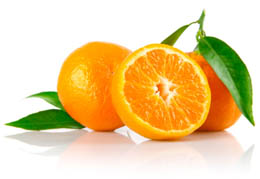

These trees were subsequently planted in the field at the USDA farm in St. trifoliata) Sun Chu Sha mandarin, and Cleopatra mandarin in the USDA greenhouse in Ft. In 2003 buds of 1-62-122 were used to produce five trees on each of four rootstocks: Carrizo citrange ( C. These trees were planted in the field in Apr. reticulata) sour orange ( Citrus aurantium, L.) and Sun Chu Sha ( C. × Poncirus trifoliata) Cleopatra mandarin ( C. Buds were taken from 1-62-122 in 1996 and grafted onto each of four rootstocks: Swingle ( C. One of the trees (evaluated as 1-62-122, ‘US Early Pride’) performed better than the other and was selected for further evaluation. In 1995, two trees producing seedless fruit were identified. Approximately 200 of these trees were planted in the field at the A.H. Whitmore Citrus Research Foundation Farm in Lake County, FL, where the trees were grown to field-plantable size.

Buds from this irradiation were propagated onto rootstocks in the greenhouse at the A.H. Mature ‘Fallglo’ budwood was irradiated in 1991 using 30 Gy units of gamma irradiation from a Cobalt-60 source in an effort to generate seedless mutants. reticulata and is referred to as a tangor. Although the pedigree of ‘Temple’ is not known, it is believed to be a natural hybrid of C. ‘US Early Pride’ is an irradiation-induced, very low-seeded mutant of the ‘Fallglo’ mandarin hybrid. Budwood irradiation has resulted in the seedless mandarins ‘Tango’ ( Roose and Williams, 2007) and ‘Orri’ an important seedless mandarin grown in Israel ( Vardi et al., 2008). Additionally, irradiation of mature budwood avoids the juvenile phase and fruit production begins much sooner than for trees originating from seeds. Because budwood is a clonal propagation of the parental material, characteristics of the parental type are preserved, thereby allowing the seedless mutants to maintain market identity yet have enhanced consumer appeal. Although irradiation of seeds or mature budwood to induce seedless mutations has proven successful for several citrus scion varieties ( Hearn, 1984, 1986 Henz, 1971 Vardi et al., 2008), irradiation of budwood is the preferred method.

Various approaches for developing seedless citrus fruit have been used ( Hearn, 1984, 1986 Henz, 1971 Recupero et al., 2008 Soost and Roose, 1996 Vardi et al., 2008) however, using irradiation to induce seedless mutants is the only means available for elimination of seeds while preserving the desirable characteristics of commercially important cultivars. It is widely accepted that the presence of seeds is undesirable to consumers and there is currently a belief that to be successful in the commercial market, mandarin fruit need to be seedless ( Campbell et al., 2004 Vardi et al., 2008). Although ‘Fallglo’ is valued as an early-season, high-quality cultivar for the fresh market, the fruit typically contain 30 to 40 seeds. In the 2009–2010 growing season ‘Fallglo’ was grown on 1476 acres in Florida, representing 21% of the “early tangerine” class of fresh fruit (USDA, 2011). ‘Fallglo’ is the earliest maturing mandarin hybrid produced in Florida, typically coming into the market in early October. ‘Fallglo’ is self-compatible and produces early-maturing, attractive, high color fruit with a peel that is relatively easy to remove along with abundant, colorful, and flavorful juice. Hearn (USDA, ARS retired) and released by the USDA in 1987 ( Hearn, 1987). ‘Fallglo’ is an early-season mandarin hybrid that was developed by Dr. Keywords: Citrus reticulata irradiation fruit characteristics cultivar


 0 kommentar(er)
0 kommentar(er)
